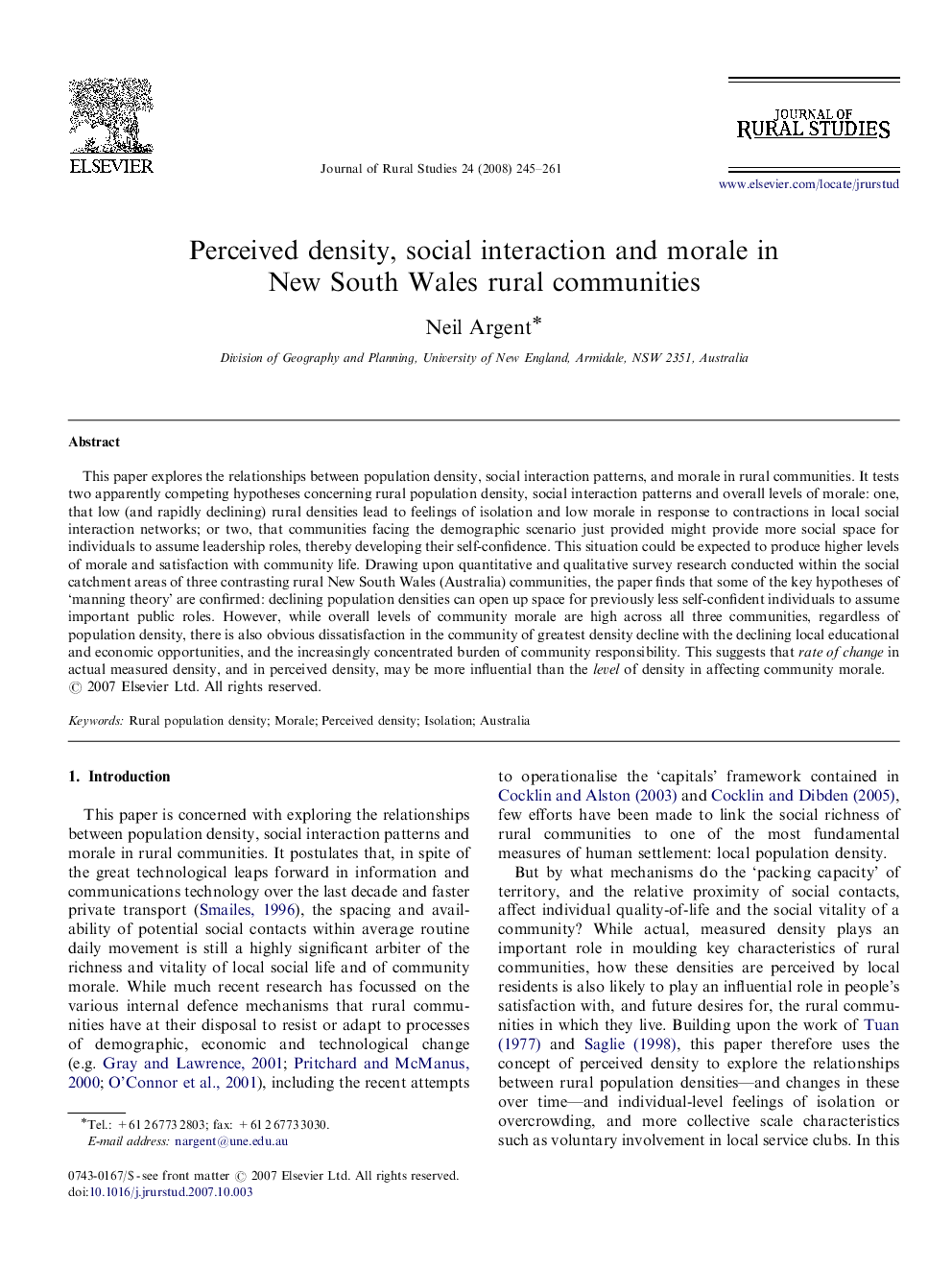| Article ID | Journal | Published Year | Pages | File Type |
|---|---|---|---|---|
| 92578 | Journal of Rural Studies | 2008 | 17 Pages |
This paper explores the relationships between population density, social interaction patterns, and morale in rural communities. It tests two apparently competing hypotheses concerning rural population density, social interaction patterns and overall levels of morale: one, that low (and rapidly declining) rural densities lead to feelings of isolation and low morale in response to contractions in local social interaction networks; or two, that communities facing the demographic scenario just provided might provide more social space for individuals to assume leadership roles, thereby developing their self-confidence. This situation could be expected to produce higher levels of morale and satisfaction with community life. Drawing upon quantitative and qualitative survey research conducted within the social catchment areas of three contrasting rural New South Wales (Australia) communities, the paper finds that some of the key hypotheses of ‘manning theory’ are confirmed: declining population densities can open up space for previously less self-confident individuals to assume important public roles. However, while overall levels of community morale are high across all three communities, regardless of population density, there is also obvious dissatisfaction in the community of greatest density decline with the declining local educational and economic opportunities, and the increasingly concentrated burden of community responsibility. This suggests that rate of change in actual measured density, and in perceived density, may be more influential than the level of density in affecting community morale.
